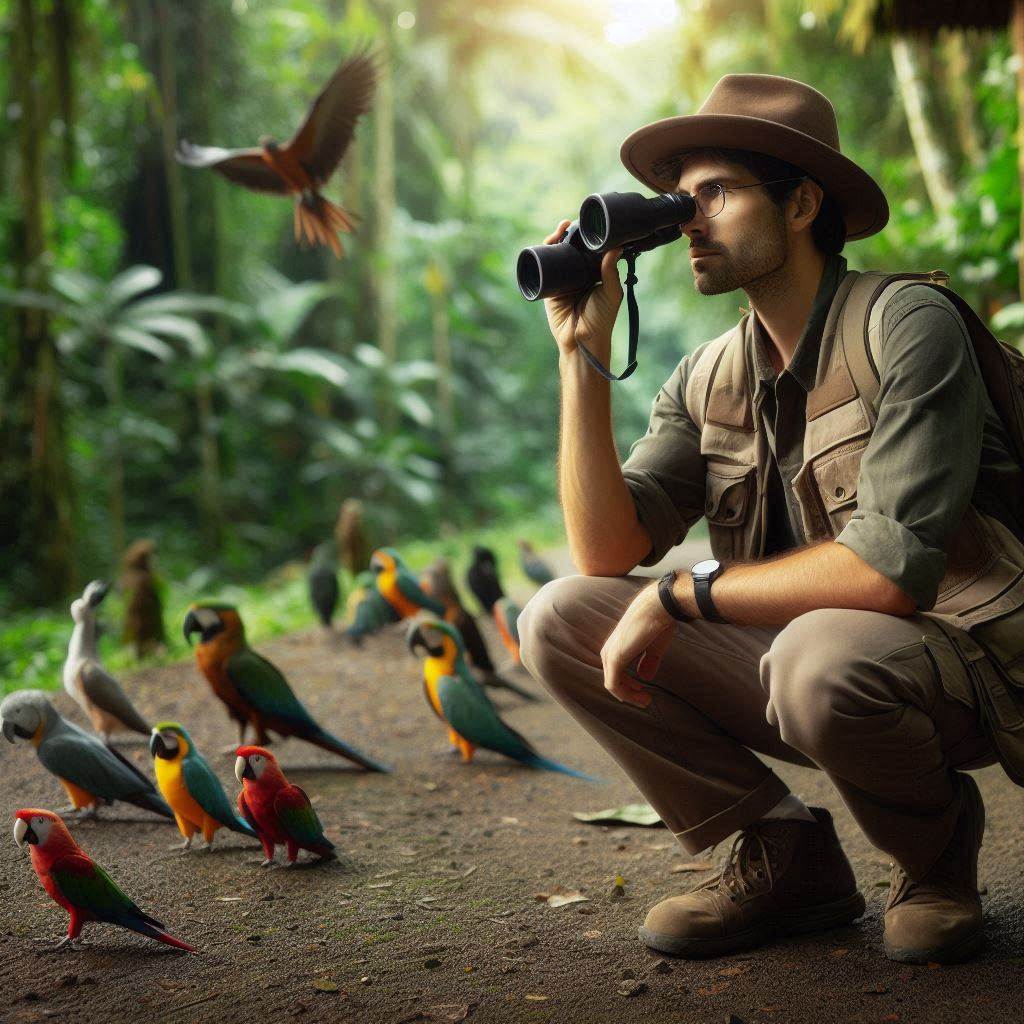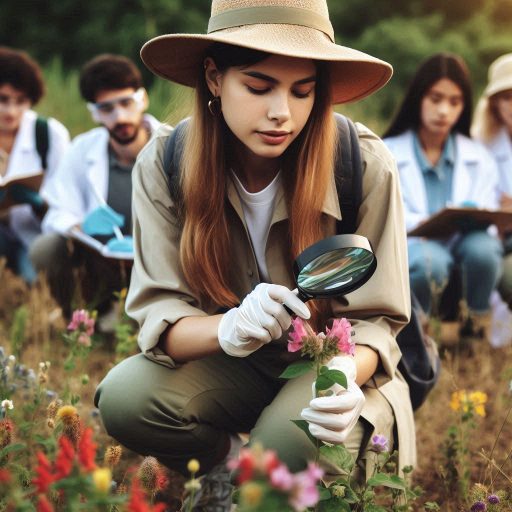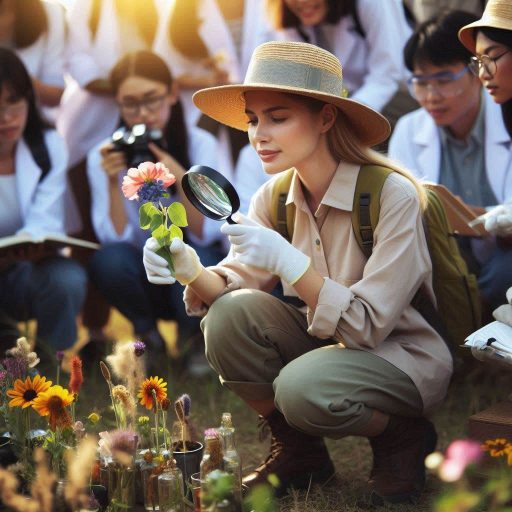Introduction
Zoology research is the scientific study of animals, encompassing various disciplines that examine their behavior, physiology, evolution, and ecology.
Researchers in this field seek to understand the intricate relationships among species, their interactions with the environment, and their roles within ecosystems.
This research spans a wide range of topics, from the behavioral patterns of social animals to the genetic makeup of endangered species.
By investigating these aspects, zoologists contribute to our knowledge of animal life and the vital functions animals perform in nature.
The importance of technological advances in zoology research cannot be overstated.
Over the past few decades, innovations in various technologies have revolutionized the ways scientists study animals.
For example, advancements in genetics, such as DNA sequencing, have made it possible to analyze species at a molecular level.
This capability enables researchers to identify genetic diversity, trace evolutionary lineages, and understand the genetic basis of traits and diseases.
Such insights are crucial for developing effective conservation strategies, particularly for threatened and endangered species.
High-Resolution Imaging Technology
High-resolution imaging technology has transformed zoology research in numerous ways.
This innovative technology enables scientists to capture detailed images of animals in their natural habitats.
Researchers can now observe animal behavior with unprecedented clarity and precision.
The ability to see minute details helps scientists understand the intricate dynamics of various species.
How It Has Revolutionized the Study of Animal Behavior
One significant advancement is the use of high-speed cameras.
These cameras can capture rapid movements that were previously unobservable.
For example, studies on predator-prey interactions have gained insights into how animals evade capture.
Researchers can analyze these interactions frame by frame, revealing strategies that animals use to survive.
Another critical tool is thermal imaging.
This technology allows researchers to study animal behavior in low-light conditions.
By detecting heat emitted from animals, scientists can monitor nocturnal behaviors.
One study used thermal imaging to observe how different species of bats hunt for insects at night.
The results showed unique hunting strategies that varied among species.
Moreover, 3D imaging techniques have revolutionized anatomical studies.
Scientists can now create detailed three-dimensional models of animals’ bodies.
This capability allows researchers to examine structures that affect locomotion, feeding, and reproduction.
For instance, a study on fish revealed how variations in body shape influence swimming efficiency.
High-resolution imaging also facilitates long-term behavioral studies.
Researchers can set up remote cameras to monitor animal movements over extended periods.
This approach helps scientists track migration patterns, mating rituals, and social interactions.
One notable study tracked the migration of monarch butterflies using high-resolution cameras, providing valuable data on their routes and behaviors.
Examples of Studies That Have Benefited from This Technology
High-resolution imaging technology aids conservation efforts by monitoring endangered species.
Researchers gather critical data for conservation strategies.
For example, a study on the African elephant employed high-resolution imaging to assess habitat use.
The findings helped conservationists implement effective measures to protect these magnificent animals.
In the realm of communication, high-resolution imaging allows researchers to study visual displays in animals.
Understanding how animals use color and patterns in communication enhances knowledge of social behaviors.
A study on bird courtship revealed how males display vibrant plumage to attract mates, illustrating the role of visual signals in reproduction.
Finally, high-resolution imaging technology has enabled collaboration across disciplines.
Zoologists, engineers, and computer scientists work together to develop new imaging techniques.
This interdisciplinary approach fosters innovation and enhances research outcomes.
By combining expertise, scientists can tackle complex questions about animal behavior and ecology.
High-resolution imaging technology has revolutionized zoology research.
Its applications have improved our understanding of animal behavior and contributed to conservation efforts.
As technology continues to advance, the potential for further discoveries in zoology remains immense.
Read: Preparing for a Botany PhD: Tips and Advice
GPS Tracking Devices in Zoology Research
GPS tracking devices have become essential tools in zoology research.
These devices enable scientists to monitor the movements and behaviors of various animal species in real-time.
By providing precise location data, GPS trackers enhance our understanding of wildlife ecology and behavior.
Researchers can gather invaluable insights into how animals interact with their environments.
How They Aid in Tracking Animal Movements and Migration Patterns
GPS tracking devices offer several advantages for studying animal movements.
First, they provide accurate and continuous location data, allowing researchers to track animals over large distances.
This capability is especially important for studying migratory species, as it reveals their travel routes and stopover locations.
Second, GPS trackers enable scientists to monitor animal behavior in different environments.
Researchers can assess how animals adapt to changes in their habitats, such as urbanization or climate change.
For example, GPS tracking has been used to study how bears navigate urban landscapes while searching for food.
Third, GPS devices facilitate long-term monitoring of individual animals.
This data allows researchers to analyze patterns in movement and behavior over time.
By understanding these patterns, scientists can identify critical habitats and assess the impact of environmental changes on animal populations.
Success Stories of Using GPS Trackers in Zoology Research
Numerous success stories highlight the effectiveness of GPS trackers in zoology research.
One notable example involves tracking the migration patterns of Arctic terns.
These birds undertake one of the longest migrations of any animal, traveling from the Arctic to the Antarctic.
GPS trackers have revealed specific routes and timing, providing insights into the challenges they face during migration.
Another success story comes from studying sea turtles.
Researchers used GPS trackers to monitor the nesting and foraging behaviors of loggerhead turtles.
The data collected has helped identify important nesting sites and led to effective conservation strategies.
By understanding their movement patterns, scientists can better protect these endangered species.
Additionally, GPS tracking has played a crucial role in the study of large mammals, such as elephants and lions.
In one study, GPS collars were used to monitor African elephants‘ movements across protected areas.
This research provided valuable information about their migratory routes and habitat preferences.
The findings helped conservationists develop strategies to mitigate human-elephant conflict.
Moreover, GPS devices have enhanced our understanding of bird behavior.
For instance, scientists tracked the movements of migratory songbirds during breeding season.
The data revealed how environmental factors influence their migration decisions.
Such insights are vital for conserving migratory birds, especially in changing climates.
GPS tracking devices have revolutionized zoology research.
They aid in tracking animal movements and migration patterns while providing essential data for conservation efforts.
As technology continues to advance, GPS trackers will play an increasingly vital role in understanding wildlife behavior and ecology.
The success stories from various studies highlight their importance in advancing our knowledge of the natural world.
Read: Interdisciplinary Research: Botany and Other Sciences
DNA Sequencing Technology
DNA sequencing technology has significantly advanced zoology research in recent years.
It allows scientists to decode the genetic material of various organisms, providing essential information about their identities and evolutionary relationships.
This technology is crucial for identifying species and understanding genetic diversity across populations.
As a result, researchers can make informed decisions about conservation and biodiversity efforts.
Importance in Identifying Species and Understanding Genetic Diversity
One of the primary benefits of DNA sequencing is its ability to accurately identify species.
Traditional methods of species identification often rely on morphological characteristics, which can be misleading due to similarities among species.
DNA sequencing eliminates this ambiguity by providing a precise genetic fingerprint for each organism.
This capability is particularly important for cryptic species, which look alike but are genetically distinct.
Additionally, DNA sequencing plays a critical role in understanding genetic diversity within and between species.
Genetic diversity is essential for species’ resilience to environmental changes and disease outbreaks.
By analyzing the genetic makeup of populations, researchers can assess their health and adaptability.
For example, studies on endangered species often use DNA sequencing to identify genetically distinct populations.
This information guides conservation strategies, ensuring that efforts focus on preserving genetic diversity.
Ways in Which DNA Sequencing Has Improved Zoology Research Methodologies
DNA sequencing technology has improved zoology research methodologies in several ways.
First, it has streamlined the process of species identification.
Researchers can now use barcoding techniques to identify species quickly.
This method involves sequencing a short, standardized region of DNA, which can then be matched to existing databases.
This approach saves time and resources compared to traditional identification methods.
Second, DNA sequencing enables the study of phylogenetics, which examines the evolutionary relationships among species.
By comparing genetic sequences, scientists can construct evolutionary trees that illustrate how species are related.
This information enhances our understanding of biodiversity and evolution, providing insights into how species adapt over time.
Third, DNA sequencing facilitates the analysis of population genetics.
Researchers can use this technology to study genetic variation within populations, helping identify factors that influence survival and reproduction.
For instance, studies on fish populations have revealed how habitat fragmentation affects genetic diversity.
Such findings are crucial for developing effective management strategies.
Moreover, environmental DNA (eDNA) analysis has emerged as a revolutionary method in zoology research.
This technique involves collecting DNA from environmental samples, such as soil or water, to detect the presence of species.
eDNA analysis allows researchers to monitor biodiversity without the need for direct observation, making it a powerful tool for conservation studies.
Finally, DNA sequencing technology has enhanced collaboration across disciplines.
Biologists, ecologists, and geneticists now work together to analyze data and interpret findings.
This interdisciplinary approach fosters innovation and leads to new methodologies in zoology research.
DNA sequencing technology has transformed zoology research.
Its importance in identifying species and understanding genetic diversity cannot be overstated.
As methodologies continue to improve, DNA sequencing will play an increasingly vital role in advancing our knowledge of animal biology, conservation, and biodiversity.
The ability to decode genetic information opens new avenues for research, making it an indispensable tool in the field of zoology.
Read: Women in Botany: Celebrating Pioneers and Leaders

Remote Sensing Technology
Remote sensing technology has become an essential tool in zoology research.
It involves using satellite or aerial imagery to collect data about the Earth’s surface without physical contact.
This technology enables scientists to monitor ecosystems and study animal habitats from a distance.
As a result, researchers can gather valuable information about wildlife populations and their environments.
How It Is Used to Monitor Ecosystems and Study Animal Habitats
Remote sensing technology allows researchers to observe large areas of land and water efficiently.
By capturing high-resolution images, scientists can analyze habitat changes over time.
For instance, they can track deforestation, urban development, and climate change impacts on ecosystems.
This information is critical for understanding how these changes affect animal populations.
Additionally, remote sensing provides insights into habitat quality and availability.
Researchers can assess vegetation cover, water bodies, and land use patterns that influence animal habitats.
For example, scientists use remote sensing to evaluate wetlands, which are crucial for many species.
By analyzing satellite imagery, they can determine the extent of wetland loss and its effects on local wildlife.
Remote sensing also facilitates the study of animal movement patterns.
By combining tracking data from GPS devices with remote sensing data, researchers can analyze how animals interact with their environments.
This integrated approach provides a comprehensive understanding of habitat use and resource availability.
Examples of How Remote Sensing Has Advanced Zoology Research
Numerous examples illustrate how remote sensing has advanced zoology research.
One notable application is the study of migratory bird patterns.
Researchers use satellite imagery to identify key stopover sites along migration routes.
This information helps conservationists protect critical habitats essential for birds during their long journeys.
Another example involves studying the impact of climate change on polar bear populations.
Scientists use remote sensing to monitor sea ice extent and quality in the Arctic.
By correlating this data with bear movement patterns, researchers can assess how declining sea ice affects their hunting and breeding success.
This research is vital for developing effective conservation strategies for these endangered animals.
Additionally, remote sensing has been instrumental in understanding habitat fragmentation.
A study on jaguar populations in Central America utilized satellite imagery to assess land-use changes.
Researchers discovered how road construction and deforestation impacted jaguar movement and genetic diversity.
The findings prompted conservation actions to create wildlife corridors that connect fragmented habitats.
Remote sensing technology has also enhanced our understanding of marine ecosystems.
For instance, researchers monitor coral reef health using satellite imagery.
By assessing changes in coral cover and water quality, scientists can track the impacts of climate change and human activity on these vital ecosystems.
This information is crucial for developing strategies to protect coral reefs and the species that depend on them.
Remote sensing technology has revolutionized zoology research.
Its applications in monitoring ecosystems and studying animal habitats provide invaluable insights into wildlife behavior and conservation.
As technology continues to evolve, remote sensing will play an increasingly important role in advancing our understanding of biodiversity and the challenges facing wildlife.
The integration of remote sensing data with traditional research methods opens new avenues for exploration and discovery in zoology.
Read: How Climate Change Is Impacting Plant Research
Artificial Intelligence and Machine Learning
Artificial intelligence (AI) and machine learning (ML) have emerged as powerful tools in zoology research.
These technologies help scientists analyze vast amounts of data collected from various studies, enabling more efficient and accurate interpretations.
As researchers continue to gather extensive datasets on animal behavior, populations, and habitats, AI and ML are becoming indispensable in unlocking insights from this information.
Applications in Analyzing Vast Amounts of Data Collected in Zoology Research
One of the primary applications of AI and ML in zoology is data analysis.
Traditional methods of analyzing large datasets can be time-consuming and labor-intensive.
However, AI algorithms can process and analyze data much faster.
For example, researchers use machine learning algorithms to identify patterns in animal movement data collected from GPS collars.
These algorithms can quickly detect trends and correlations that might be overlooked by human analysts.
Additionally, AI helps in image recognition and classification.
Zoologists often gather thousands of images from camera traps or field studies.
Manually identifying species in these images can be tedious.
Machine learning models can be trained to recognize specific animal species based on their features.
This automation streamlines the identification process and reduces human error.
AI and ML also enhance the modeling of ecological systems.
By integrating various data types, such as environmental factors and species interactions, researchers can create sophisticated models that simulate ecosystem dynamics.
These models can predict how changes in one species affect others and help in understanding complex ecological relationships.
How AI Is Aiding in Predicting Animal Behavior and Population Trends
AI and ML are particularly effective in predicting animal behavior and population trends.
By analyzing historical data, researchers can develop predictive models that forecast future behaviors based on environmental variables.
For instance, a study on migratory patterns used machine learning to predict changes in migration timing due to climate change.
The model considered factors like temperature, food availability, and habitat conditions, providing valuable insights for conservation efforts.
Furthermore, AI can analyze acoustic data to monitor animal populations.
Many species communicate using vocalizations, and recording these sounds provides essential data for understanding population dynamics.
Machine learning algorithms can process large audio datasets, identifying species calls and estimating population sizes based on call frequency.
This method has been used successfully to monitor bird populations and assess their responses to environmental changes.
AI is also transforming wildlife conservation efforts.
Predictive analytics can assess the risk of extinction for endangered species by analyzing factors like habitat loss, poaching, and climate change.
By identifying high-risk populations, conservationists can prioritize their efforts and allocate resources effectively.
In addition, AI-driven platforms enable citizen scientists to contribute to research efforts.
Applications allow users to upload photos and recordings of wildlife, which AI analyzes for species identification.
This approach not only increases data collection but also raises public awareness about biodiversity and conservation.
Artificial intelligence and machine learning are revolutionizing zoology research.
Their applications in analyzing vast datasets enhance the efficiency and accuracy of studies.
By aiding in predicting animal behavior and population trends, these technologies provide critical insights for conservation efforts.
As AI continues to evolve, its integration into zoology will lead to more informed decision-making and effective management strategies for wildlife and ecosystems.
Transform Your Career Today
Unlock a personalized career strategy that drives real results. Get tailored advice and a roadmap designed just for you.
Start NowYou Might Also Like: Soil Scientist Internship and Training Programs
Virtual Reality and Simulation Technology
Virtual reality (VR) and simulation technology have become innovative tools in zoology research.
These technologies allow researchers to recreate animal environments in a virtual space, enabling detailed study and analysis of animal behavior and ecology.
By simulating natural habitats, scientists can conduct experiments and observations that were previously challenging or impossible in the real world.
How It Is Being Used to Recreate Animal Environments for Research Purposes
VR technology provides immersive experiences that replicate the natural environments where animals live.
Researchers can create detailed, 3D simulations of various habitats, including forests, wetlands, and ocean ecosystems.
These virtual environments allow scientists to manipulate specific variables, such as temperature, light, and vegetation, to observe how animals respond to different conditions.
For example, researchers studying the effects of climate change on animal behavior can create simulations that model future habitat conditions.
By placing animals in these virtual scenarios, scientists can observe their responses and adaptations without disrupting real populations.
This approach offers a unique opportunity to explore potential future outcomes for various species.
Simulation technology also enables scientists to model animal interactions within ecosystems.
By simulating predator-prey dynamics, researchers can study how changes in one population affect others.
These models can incorporate various factors, such as food availability and environmental stressors, providing a comprehensive view of ecosystem dynamics.
Benefits of Using VR and Simulation in Zoology Research
The use of VR and simulation technology offers several benefits for zoology research.
First, these tools enhance experimental control.
Researchers can manipulate variables precisely, allowing for more accurate measurements of animal responses.
This level of control reduces the variability found in field studies, leading to more reliable results.
Second, VR simulations allow researchers to conduct experiments that would be ethically or logistically challenging in real life.
For instance, scientists can simulate potential threats, such as predators or environmental changes, to observe how animals adapt their behaviors.
This approach minimizes stress on real animals while still providing valuable insights into their responses.
Third, VR and simulation technology facilitate education and outreach.
By creating immersive experiences, researchers can engage the public in understanding animal behavior and conservation issues.
Virtual reality exhibits can transport users to distant habitats, fostering a greater appreciation for biodiversity and the importance of protecting natural ecosystems.
Additionally, these technologies promote collaboration across disciplines.
Researchers in zoology can work with experts in computer science, engineering, and design to create realistic simulations.
This interdisciplinary approach fosters innovation and leads to new methodologies in studying animal behavior and ecology.
Furthermore, the insights gained from VR and simulation research can inform conservation strategies.
By understanding how animals may respond to changing environments, conservationists can develop more effective management plans.
This proactive approach can help mitigate the impacts of habitat loss, climate change, and other threats to wildlife.
Virtual reality and simulation technology are transforming zoology research.
Their ability to recreate animal environments allows for controlled, ethical experimentation and deeper insights into animal behavior.
As these technologies continue to advance, their integration into zoology will enhance our understanding of wildlife and inform conservation efforts.
The benefits of using VR and simulation extend beyond research, fostering public engagement and interdisciplinary collaboration to protect our planet’s biodiversity.
Conclusion
Technological advances have significantly transformed zoology research in recent years.
Innovations in genetics and genomics have revolutionized species identification, enabling researchers to analyze genetic material swiftly and accurately.
These advancements enhance conservation efforts by helping scientists understand genetic diversity and evolutionary relationships among species.
Remote sensing technology now allows researchers to monitor animal populations in real-time.
This capability is crucial for tracking migrations and assessing habitat changes.
Additionally, artificial intelligence has emerged as a powerful tool in data analysis, revealing patterns and trends that were previously undetectable.
AI algorithms can process vast amounts of data quickly, allowing researchers to draw insights more efficiently.
The integration of biotechnology opens new avenues for understanding animal behavior and physiology.
Techniques such as CRISPR gene editing enable scientists to explore the genetic basis of traits and diseases.
This level of understanding could lead to targeted conservation strategies for endangered species.
As technology continues to evolve, we can expect even more profound insights into biodiversity and ecosystems.
Future zoology research will increasingly rely on collaborative efforts across disciplines, blending biology with fields like computer science and environmental science.
Such interdisciplinary approaches will foster innovative solutions to pressing conservation challenges.
Moreover, public engagement with technology will promote awareness and support for wildlife protection.
Citizen science initiatives, facilitated by mobile applications, empower individuals to contribute data on local wildlife, enriching research efforts.




